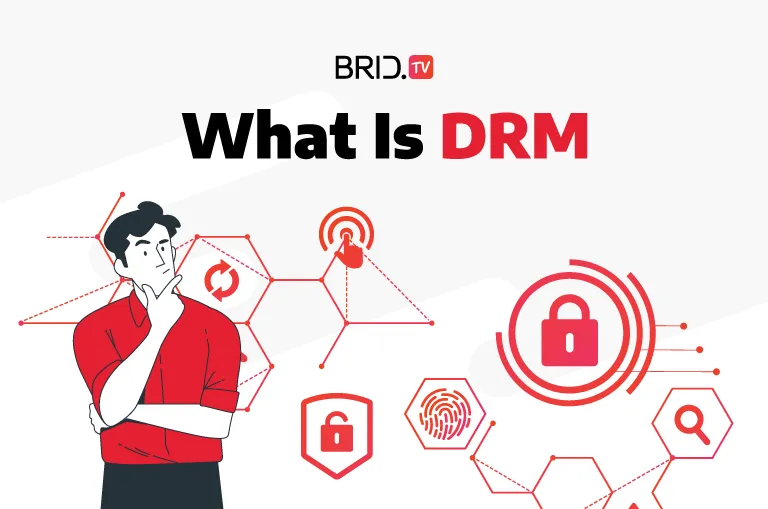For the last few years, digital rights management (DRM) has been a hot topic in the online world, and for a good reason. Despite that, most people probably haven’t even heard of this term. And why would they?
Unless you’re a publisher or digital content creator, you probably rarely (if ever) consider how challenging it is to protect your content from piracy online. However, piracy has been a rampant problem for over a decade now and affects all forms of online media. Here are a few online piracy statistics to give you a better perspective:
- Pirated video content gets over 230 billion views a year.
- 17% of all e-books downloaded in the U.K. are pirated.
- More than 33% of music listeners pirate music.
- The software industry loses over $50 billion in revenue to piracy each year.
And this data is just what’s confirmed. In reality, there are millions of other cases of illegal use, reposting, and content theft across the internet daily. Social media networks like Twitter and video-sharing websites like YouTube are some of the main culprits.
Since online piracy is such a massive issue, services like DRM are essential to publishers and creators trying to make a living off premium content. This technology has been around for a long time and has been perfected to help businesses and content creators protect their digital IPs.
Despite its effectiveness, though, many publishers and creators have yet to familiarize themselves with it. That’s why we wrote this article to help you inform yourself about digital rights management (DRM), how it works, and whether your business needs it.
A Brief History of DRM
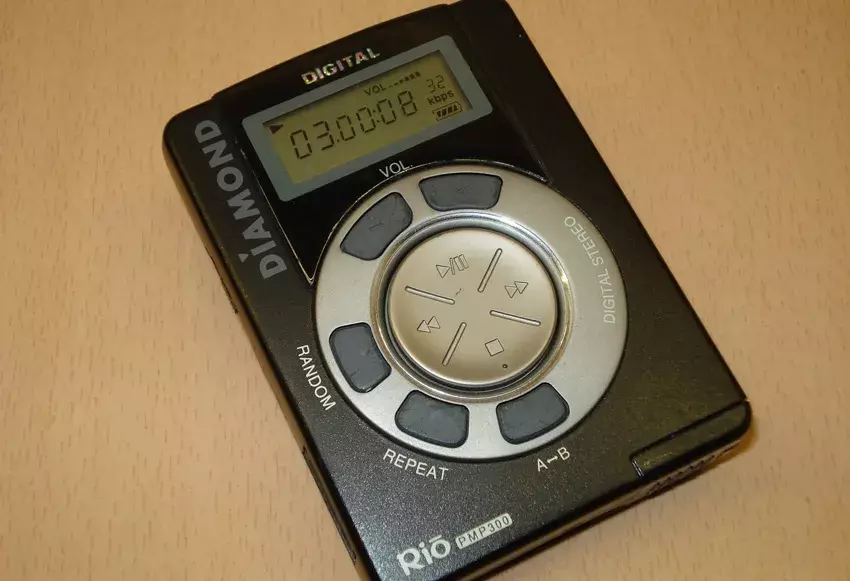
Do you remember these little buggers? We most certainly do!
When the first MP3 players like this one appeared on the market back in the 90s, they threw the entire music industry into an uproar. Record labels worldwide feared the rapid digitalization of the industry and predicted that this technology would give an unprecedented rise to piracy.
They were right.
Although piracy was present even before the popularization of the MP3 container, it was much harder (and more expensive) to pull off since it mainly dealt with physical copies.
However, with the new MP3 format, copying and transferring files illegally was never easier. Thanks to portable MP3 players, anyone could exchange and transfer music in a few clicks, and there was seemingly no way to prevent that… or was there?
When Apple released its iPod in 2001, it brought with it one of the earliest forms of anti-piracy measures. Unlike regular MP3 players, the iPod prevented users from freely moving MP3 files off of the device. Instead, the music files would be stored on Apple’s online servers, safeguarding the content behind a unique encrypted ID. That meant people couldn’t copy the same digital music files freely between devices anymore.
Fast forward to today, and dozens of industries worldwide use a similar system now to help publishers and content creators protect their digital IPs — DRM.
What Is Digital Rights Management (DRM)
Digital rights management (DRM) is the technology or system used to protect digital copyright by managing and limiting access to copyrighted digital media. DRM software also includes various measures against unauthorized copying, distribution, and modification of said copyrighted materials.
DRM technology gives publishers and content creators full control over who and what they can do with their content, protects their IPs, and prevents their work from being stolen and illegally distributed online. That makes DRM the cornerstone of any online business relying on the selling and distribution of exclusive and premium content.
Although DRM doesn’t combat and pursue those who engage in piracy, it completely prevents your content from falling victim to it in the first place.
What Is DRM Protected Content
DRM-protected content means that the content in question has various restrictions on how people can use it. Almost any type of digital content can be DRM-protected, including but not limited to:
- E-books
- Videos
- Music
- PDF Files
- Images
- And more…
Content protected by DRM technology usually has various safeguards that limit how users can interact, edit, or distribute it. Here are a few ways publishers can use DRM to manage their IPs:
- Prevent users from editing or saving content.
- Limit or prohibit sharing or forwarding of a specific product or content.
- Restrict or limit users from printing specific content.
- Prevent users from screenshotting a product or content.
- Set expiration dates on online documents, pieces of media, or content.
- Lock specific content pieces for certain IP addresses, GEO locations, or devices.
- Watermark visual or video content or documents to establish ownership.
As you can see, publishers and content creators have plenty of freedom and customization options for their DRM-protected content. That is the primary reason this technology is the go-to choice for piracy prevention for millions of businesses worldwide.
How DRM Works
Digital rights management technology works on a simple premise — it encrypts digital files and locks them behind a unique ID so that only specific devices or users that meet a set of criteria can access them. That prevents third parties from accessing or playing back these media files without purchasing them.
Here’s a step-by-step illustration of how DRM works on an example of online video:
- When the IP owner uploads a video file to their platform or streaming service, the file gets a unique encryption key from a DRM provider and uploads it to the DRM platform.
- The platform encrypts the said video file and sends the decryption key and the necessary metadata to a license server for distribution.
- When the copyright holder puts up the said video on their website or service, the encrypted version of the file is packaged and sent instead.
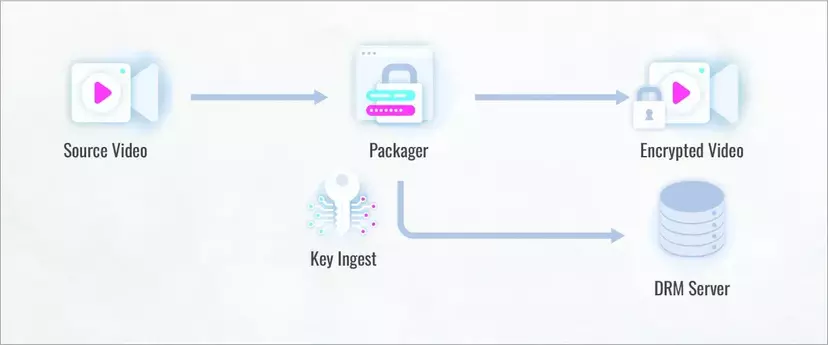
- When a user tries to play the said content, the HTML5 video player sends a request to the IP holder’s proxy to verify whether the user has the right to access the said piece of content.
- If the copyright holder’s website or service validates the user’s access rights, it communicates with the DRM platform and sends the license/decryption key to enable playback. The same process happens if the user tries to download the said video.
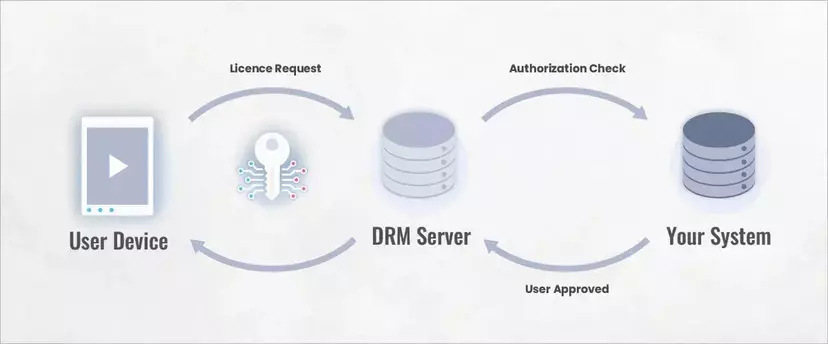
As you can see, the DRM system functions as a sort of lock that can only be opened with a specific key (decryption key). And since the license server is in charge of distributing these keys, only users with valid licenses (those who purchased the product) will be able to access your content.
Examples of DRM in Practice
Now that you’re familiar with how DRM works, here are a few real-life examples of it in action to help you get a broader picture:
- Apple iTunes — Apple’s iTunes store is one of the first services to implement DRM and relies on it to control which users can access and download audio files. That prevents users from simply copy-pasting and illegally distributing music without purchasing the rights to it beforehand.
- Digital Music (e.g., Spotify) — Music streaming platforms like Spotify that use subscription-based models for music streaming use DRM technology to track the time users spend streaming different artists’ music and calculate the copyright royalties each gets for their work.
- Private Documents (e.g., Watermarking) — Many businesses worldwide use DRM technology to sign and restrict access to their important documents. DRM lets them track the original versions of these files, any edits, copies, and designate what people can alter in them. That is most useful when making long-distance contracts, as it improves these documents’ security and legitimacy.
- Computer Software (e.g., Microsoft Windows) — Most downloadable computer software nowadays comes with a unique license number and key that allow IP owners to track and control who has access to their content. One of the most famous examples is the Microsoft Office Suite.
- OTT Streaming Services (e.g., Netflix) — Dozens of OTT services like Netflix, Hulu, or Disney+ rely on DRM technology to ensure only users who’ve paid a subscription fee or bought a piece of content can stream it.
Despite its widespread use and versatility, DRM is not a be-all-end-all solution. In fact, not everyone needs to protect their digital IPs.
Some industries rely (and depend) on their content getting copied and shared to survive and won’t have much use of DRM. So it’s only natural for publishers to ask the million-dollar question — how do I know if I need DRM?
Why (and When) Publishers Need DRM Protection
Although the answer to the above question is not so straightforward, it isn’t rocket science either. It mostly depends on your business model.
When You Don’t Need Digital Rights Management
If you are a publisher working in the online media space and rely on advertising video on demand to monetize your content, you won’t need DRM protection. The reason is simple — publishers who rely on ad-based monetization don’t need to restrict how and which users see their content. Quite the contrary — they want as many people to interact with it as possible.
The more people watch and share your videos, the more video ad revenue you’ll earn. So there’s no tangible reason to restrict content sharing or limit user access.
When You Do Need Digital Rights Management
There are several instances when publishers should consider getting DRM, though. One of the most notable ones is when they want to launch a subscription-based or video-on-demand service.
Whether you have a hybrid monetization model or want to launch an OTT app or a new live streaming platform, you will need to protect your content since your income will greatly depend on it. Restricting non-paying users from accessing your videos and current subscribers from readily sharing or copying your content will prove crucial in attracting more paying customers in the long run.
Another use of DRM in the online video industry is for anyone who provides premium, pay-per-view content or online lessons. If any of your paywalled content ends up pirated and put on the internet, you’ll lose out on many potential sales.
In these situations where DRM is crucial for your business’s survival, setting it up promptly is vital. After all, once your content is out there, there’s next to no way of removing it from the internet, and the damage will have already been done.
How Brid.TV Can Help Publishers Protect Their Videos With DRM
If you’re a publisher looking for a reliable way to monetize videos or live streams while ensuring your content is safe from theft, we at Brid.TV can help you.
Brid.TV’s HTML5 player is fully compatible with Google Widevine, Microsoft PlayReady, and iOS Fairplay DRMs. That means publishers using one of these DRM solutions can easily integrate them with our player to protect their content.
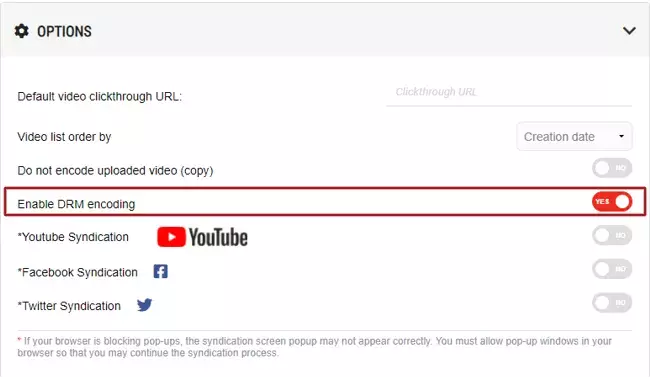
If you aren’t using any of these providers but still want to protect your content from theft, you can still do that with our third-party partner, EZDRM.
So whether you’re a publisher looking for a safe video monetization solution or wish to launch a VOD service, you can easily do so with Brid.TV.
Want to learn more about our DRM solution and how to set it up? Get in touch with us, and let us help you get started.
FAQ
1. What is DRM software?
DRM software is a program or solution that helps companies and brands protect their digital IPs and exercise greater control over how users can interact and what they can do with their content.
2. What is a DRM license?
A DRM license is a technological framework of encryptions that DRM software uses to protect copyrighted content online and prevent its illegal distribution.
3. What is DRM encryption?
DRM encryption is the process digital rights management software uses to encrypt copyrighted media files to prevent third parties and unauthorized users from accessing, editing, or sharing them illegally.
4. How does DRM encryption work?
DRM encryption works on the principle of a lock and key. Each encrypted file can be accessed only with a specific decryption key, and the distribution of these keys is handled by the DRM software. That way, only users who have met specific criteria (e.g., paid for the content) can access these files.
5. What is protected by DRM?
You can use DRM to protect almost any kind of online media or content. Some of the content that can be protected includes but is not limited to:
- E-books
- Music
- Videos
- Images
- PDF files
- And more…
6. What is a DRM-protected file?
A DRM-protected file is a media file encrypted by DRM software to protect it from unauthorized access, editing, and copying.
